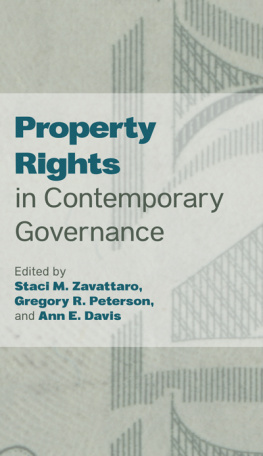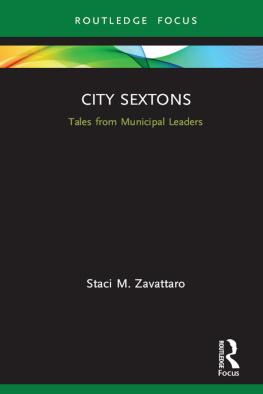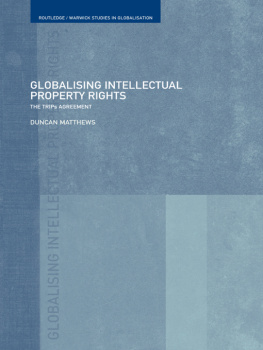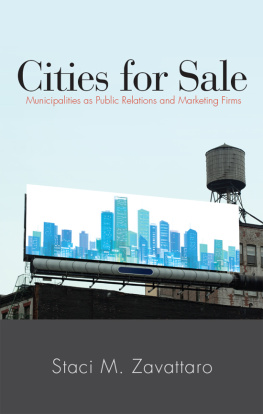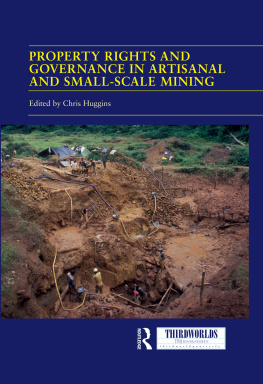PROPERTY RIGHTS IN CONTEMPORARY GOVERNANCE
PROPERTY RIGHTS
IN CONTEMPORARY
GOVERNANCE
Edited by Staci M. Zavattaro,
Gregory R. Peterson,
and Ann E. Davis
Published by State University of New York Press, Albany
2019 State University of New York
All rights reserved
Printed in the United States of America
No part of this book may be used or reproduced in any manner whatsoever without written permission. No part of this book may be stored in a retrieval system or transmitted in any form or by any means including electronic, electrostatic, magnetic tape, mechanical, photocopying, recording, or otherwise without the prior permission in writing of the publisher.
For information, contact State University of New York Press, Albany, NY
www.sunypress.edu
Library of Congress Cataloging-in-Publication Data
Names: Zavattaro, Staci M., 1983- editor. | Peterson, Gregory R., 1966- editor. | Davis, Ann E., [date] editor.
Title: Property rights in contemporary governance / edited by Staci M. Zavattaro, Gregory R. Peterson, Ann E. Davis.
Description: Albany : State University of New York Press, [2019] | Includes bibliographical references and index.
Identifiers: LCCN 2018012994 | ISBN 9781438472898 (hardcover : alk. paper) | ISBN 9781438472904 (e-book)
Subjects: LCSH: Real propertyEconomic aspectsUnited States. | Land useLaw and legislationUnited States. | Real propertyUnited StatesHistory.
Classification: LCC KF572 .P76 2019 | DDC 346.7304dc23 LC record available at https://lccn.loc.gov/2018012994
10 9 8 7 6 5 4 3 2 1
CONTENTS
Staci M. Zavattaro, Gregory R. Peterson, and Ann E. Davis
Ann E. Davis
R. Ben Brown
Jill Fraley
Tyson Leuchter
Donald G. Richards
Karen Z. Consalo
Chad J. McGuire
Staci M. Zavattaro
Gregory R. Peterson
Timothy M. Ravich
Gregory R. Peterson, Ann E. Davis, and Staci M. Zavattaro
ILLUSTRATIONS
PREFACE
We sat together in a classroom at Marist College in Poughkeepsie, New York, during Summer 2014, looking out the window to see a gorgeous view of the Hudson River, green hillscapes, and rumbling trains below. The three of us would not have met otherwisean economist, a philosopher, and a public administration scholar. We had come together to participate in the National Endowment for the Humanities summer institute, Meanings of Property, developed and led by Ann Davis to foster interdisciplinary approaches to the study of property and ownership. Attendees affectionately called our summer together Property Camp. About thirty scholars from various disciplines such as economics, law, history, public administration, political science, and bioethics gathered for six weeks to study, debate, and exchange ideas about how property and its various interpretations guide our everyday lives. The viewshed outside our classroom window, as we learned, was critical in the area for both real property and social contract reasons.
The work of John Searle, particularly the book Making the Social World: The Structure of Human Civilization (2010), opened our analysis that summer. In that work, Searle argues that the relevance of the term property would be its meaning in particular social institutions. There would be language statements regarding how the term, and its referent, would be understood and used in social and cultural contexts. There would be status function declarations, which designate certain persons to have particular powers with regard to the object. Those declarations could be public and verifiable with official documents. For example, the registry of motor vehicles would verify that this 1968 Volkswagen Beetle is my car, that I had a title, that I had purchased the car from a legitimate dealer, and that its safety inspection verified it for road use. Further, it would be necessary to supply evidence that I was an authorized driver with car insurance and a drivers license, for which I had been tested in a uniform procedure.
Work from Stuart Banner proved useful in the exploration in the historical variation property types, particularly his book American Property: A History of How, Why and What We Own (2011). Banner explored diverse historical and cultural contexts to demonstrate the wide variation in forms and types of property. Mary Poovey and Hendrik Hartog elaborated on the epistemological and institutional contexts of property. Alan Ryan provided the long-term history of property, citing Greek and Roman law, as well as liberal political theory. Robert Goldstein discussed the ecological implications of the definition of property, and Kenneth Pomeranz guided us in examining property variations in China as historically compared with the West. As readers can tell, the scope of our deliberations regarding such a seemingly simple construct as property was wide-ranging, including philosophical, economic, historical, cross-cultural, social, linguistic, and contextual factors.
During the institute, participants raised important questions regarding the importance of language. We challenged Searles foundation of all institutions in language statements, and proposed other forms of nonverbal communication that conveyed important social understandings. We questioned whether land was a particular kind of property, which existed prior to legal understandings and judicial proceedings. Others challenged the way that the human body has been conceptualized as property, not only in Lockes famous argument for self-ownership but also in the historic institution of American slavery and contemporary medical practices that impinge particularly on the rights women have over their own bodies. Fellow scholars brought references to other literature and other disciplines, such as anthropologists David Harvey and Arjun Appadurai. We list the variety of authors here not to show how many books we read. No. Instead, we list them purposefully to underscore the interdisciplinary foundations that led to this volume.
Searles position on human rights was challenged, as well as his view that negative human rights, such as private property, were more enforceable than positive rights, such as adequate nutrition (Searle 2010). The role of property in the foundation of the liberal state, and its role in economic production and income distribution were other aspects that were mentioned. The rich discussions and debates provided much of the foundation for this book. To round out the volume, we invited in scholars from areas not as well represented at the seminar, and this led to the inclusion of interesting contributions about water rights and drone regulations. The intention is to share with the reader some of these questions, debates, and resources on this important issue of the meanings of property, including terminology, authoritative statements, and social institutions.
INTRODUCTION
Property, Governance, and a Plan for the Book
STACI M. ZAVATTARO, GREGORY R. PETERSON, AND ANN E. DAVIS
Imagine this scenario. A woman leaves her corporate job to open her dream bakery. She quits to enroll in pastry school. She takes out traditional loans yet also turns to GoFundMe, an online, crowdsourced fundraising platform, for assistance. There, she knows strangers can contribute to her online campaign for books and other school supplies. Upon graduation, she decides to start her own business but cannot immediately afford a storefront with kitchen equipment, so she rents space from a local corporation that makes a business of such ventures. She is there daily with other chefs preparing food for delivery. She then opens her virtual storefront, turning toward a free website hosting service. She does not need to pay a fee to use their templates to create a business website.


